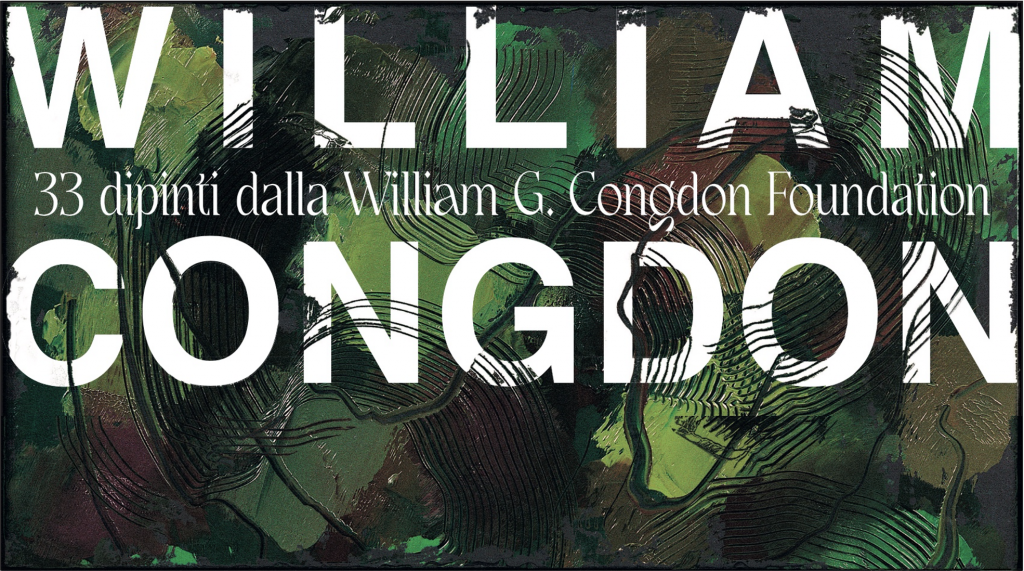WILLIAM CONGDON. 33 dipinti dalla William G. Congdon Foundation
Curated by Davide Dall’Ombra
Palazzo Bisaccioni, Jesi
12 December 2021 – 27 March 2022
The Fondazione Cassa di Risparmio di Jesi presents an important anthological exhibition of the work of the American painter William Congdon (1912-1998), an exceptional interpreter of the twentieth century whose painting gave a face to the human quest of the short century, thanks to an anthropological investigation that resulted in paintings of great lyrical power, between the city and man-made nature.
The exhibition is a project of the cultural association Casa Testori and presents a collection of works generously made available by the William G. Congdon Foundation – which safeguards the painter’s work – and specially selected by Davide Dall’Ombra, director of Casa Testori.
An exhaustive and unexpected journey of more than 30 paintings, often of large dimensions, conceived for the spaces of Palazzo Bisaccioni: from the New Yorks of the 1940s and the Venices loved and collected by Peggy Guggenheim, to the metaphysical landing place of the Campi arati of the 1980s and 1990s.
The visitor will be able to move his gaze from the disruptive energy of the American language of Action Painting, of which Congdon was an interpreter, through his early experiences of travelling to his chosen cities. Thus the imposing Rome of the Pantheon‘s vestiges comes to terms with an existential representation of architecture, represented by the chasm of the Colosseo or the precariousness of the city of Assisi, crumbling on the hillside.
In the exhibition, Congdon’s “portraiture” of cities is illustrated one after the other by imposing paintings of Istanbul, the Taj Mahal, the human-marked desert of the Sahara and the Santorini chasm.
As a counterpoint to the torments and splendours of civilisations, Congdon descends into the minutiae of existence, crossing the metaphor of the animal which, like nature, must come to terms with the violence of man. It is thus that the cycle of the Tori (bulls) becomes a metaphor for the cruel pursuit, expressed in our traditions, as in the pursuit of our own desires. But even a humiliated, wounded and doomed bull can be – writes Congdon – redeemed by the artist, who eternalizes its greatness and power through painting. From painting as redemption to the human symbol of suffering and resurrection par excellence, the Crocifisso (Crucifix), the step is short. However, the American artist’s approach is never aesthetic or theoretical and his approach to the sacred subject only comes after his tormented conversion to Catholicism.
The move to the south of Milan focuses his point of view on an almost unique subject: cultivated fields. It is in the last twenty years of his life that the research, from spatial, becomes temporal and the power of the earth and its transformations become the protagonists. These are not idyllic visions: the horizon unfolds over the fields and the human process operated on the surface is followed. It is a torment, also of a material nature, that seems to find peace in the Nebbie (Mists) and the monochromes, culminating in the musical lyricism of the vegetation that concludes the exhibition.
Thus, the meditations on George Braque and Nicolas De Staël re-emerge, but above all, the pictorial dialogues with the New York School linked to Betty Parsons’ gallery, which led to the presence of Congdon’s works in the most important American museums and in the Peggy Guggenheim Collection in Venice.
William Congdon is one of the most profound painters of the 20th century, a naturalised Italian but always American in his artistic attitude. Some of the most important international critics have written about him, including: Clement Greenberg, Jacques Maritain, Giulio Carlo Argan, Giovanni Testori, Peter Selz, Fred Licht, and Massimo Cacciari.
OPENING HOURS
Monday-Sunday: 9:30 a.m. – 1 p.m.; 3:30 p.m. – 7:30 p.m.








